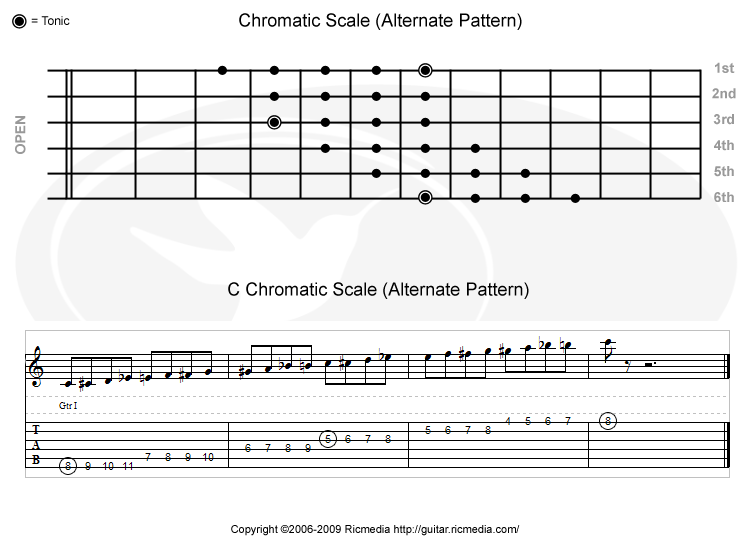Check out this free lesson from Guitar Control “Learn How To Play The Chromatic Scale on guitar” with free guitar tabs.
Guitar Scale
For the beginning and intermediate student learning guitar scales, you may be facing a confusing and daunting task. At the outset, you have to ask yourself, why do I want to learn scales? Usually because you want to play lead parts or incorporate more melodic elements to your playing. Scales are far more than solos, and solos are often times more than scales. In fact, the object of acquiring this knowledge should be to increase your general capacity as a guitarist.
Here’s one incredibly simple thing to remember: if you know how to play a D chord for instance, you already know how to play a particular scale called a D major arpeggio, which consists the root, 3rd and 5th tones of the D major scale. When you pick each note of the chord in succession, you’re playing a scale. But let’s not get ahead of ourselves.
Contrary to popular opinion, the first scale any guitarist should learn is neither major nor minor – it’s chromatic. There are at least two good reasons for this argument. First, it promotes all-around finger control and strength. You could theoretically play in any key without ever using your pinky – and a lot of players do just that. But if you watch players like Eddie Van Halen, you’ll see that he uses his left hand pinky – a lot. Learning and playing the chromatic scale without using your pinky is tiresome, awkward and downright stupid. Get onboard with the pinky, and the best way to do that is with the chromatic scale, up and down the fretboard.
Second, learning the chromatic scale first helps you avoid what I call a “key dominant” approach to playing guitar. When you tackle a song that’s in the key of A minor, you may be misled into thinking the whole song is in A minor, meaning only the A minor scale can or should be used in the song. This may in fact be the case, but not so fast, Speed Racer.
Let’s take a quick look at a fairly common chord progression: Am – F major – E7. Now, if you played only the A minor scale over the progression, you could make it sound good, but you’re going to be missing one very critical note: the A flat of E7, which is really what gives the song its character. More often than not, you will rarely ever be playing only one scale in a song.
Check out this cool guitar lesson on CHROMATIC SCALES
By learning and mastering the chromatic scale, your mind and fingers are ready and able to play any note in any position on the fretboard. It also breaks the mold of thinking within the key. With the chromatic scale as your base, it allows you to begin thinking outside of the traditional “Western” seven-tone approach to playing scales.
If you want to go deeper in this matter, I recommend you to check out our:




